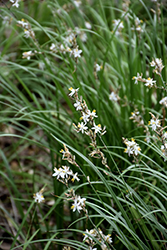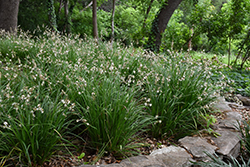It's all about ...
plants

Plant Height: 18 inches
Flower Height: 24 inches
Spacing: 15 inches
Sunlight:
![]()
![]()
Hardiness Zone: 4a
Description:
Airy clusters of white, lily-like flowers with yellow anthers rise well above a clump of narrow, dark green, grassy like foliage in mid to late spring; a nice, fine textured addition to gardens and borders
Ornamental Features
St. Bernard's Lily features showy clusters of white trumpet-shaped flowers with yellow anthers rising above the foliage from mid to late spring. The flowers are excellent for cutting. Its glossy grassy leaves remain dark green in colour throughout the season.
Landscape Attributes
St. Bernard's Lily is an herbaceous perennial with a mounded form. Its relatively fine texture sets it apart from other garden plants with less refined foliage.
This is a relatively low maintenance plant, and may require the occasional pruning to look its best. It is a good choice for attracting bees and butterflies to your yard. Gardeners should be aware of the following characteristic(s) that may warrant special consideration;
- Self-Seeding
St. Bernard's Lily is recommended for the following landscape applications;
- Mass Planting
- General Garden Use
- Naturalizing And Woodland Gardens
Planting & Growing
St. Bernard's Lily will grow to be about 18 inches tall at maturity extending to 24 inches tall with the flowers, with a spread of 18 inches. When grown in masses or used as a bedding plant, individual plants should be spaced approximately 15 inches apart. Its foliage tends to remain dense right to the ground, not requiring facer plants in front. It grows at a slow rate, and under ideal conditions can be expected to live for approximately 15 years. As an herbaceous perennial, this plant will usually die back to the crown each winter, and will regrow from the base each spring. Be careful not to disturb the crown in late winter when it may not be readily seen!
This plant does best in full sun to partial shade. It prefers to grow in average to moist conditions, and shouldn't be allowed to dry out. It is not particular as to soil pH, but grows best in rich soils. It is somewhat tolerant of urban pollution. This species is not originally from North America. It can be propagated by division.
This plant is not reliably hardy in our region, and certain restrictions may apply; contact the store for more information.

